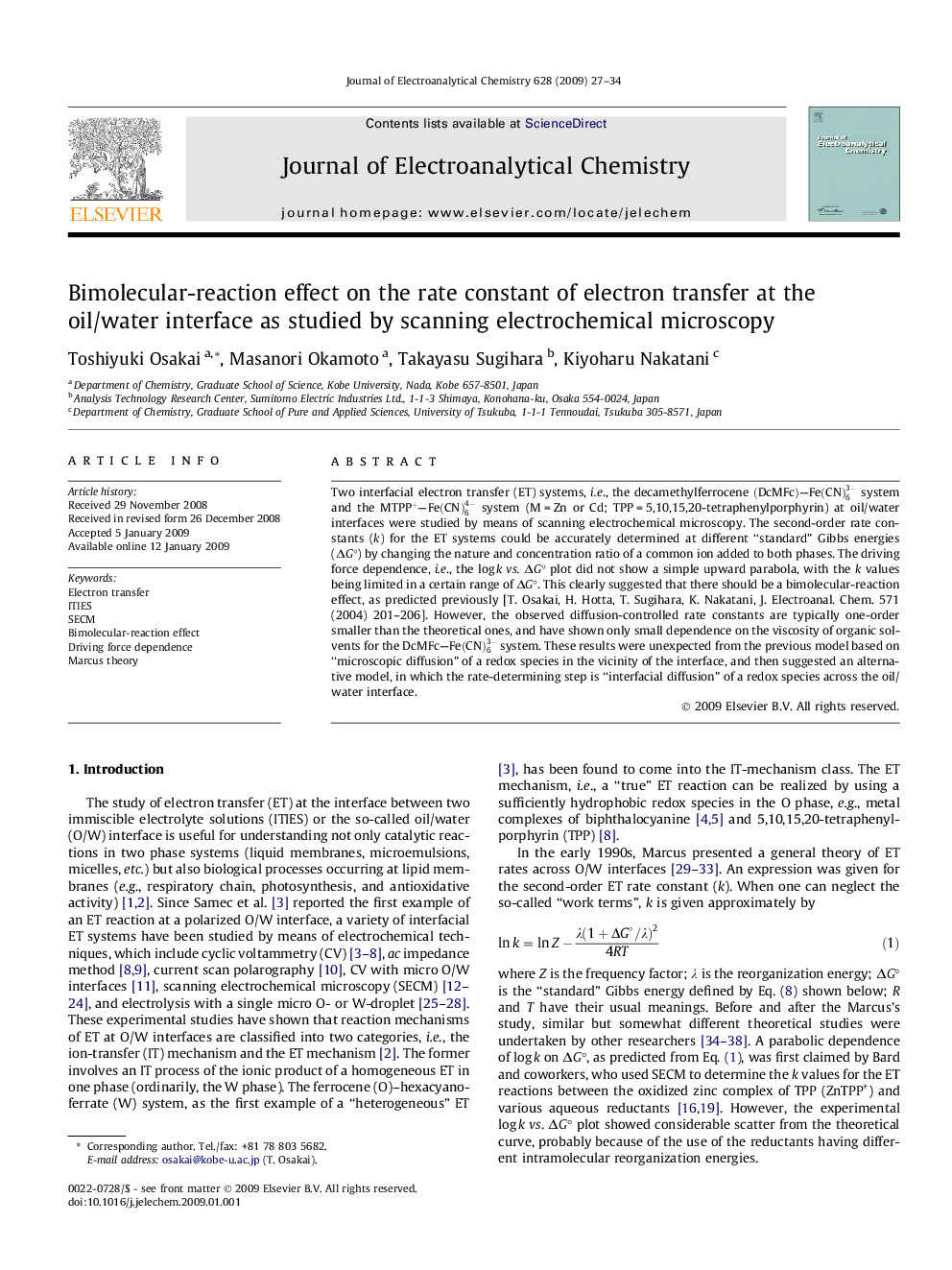| Article ID | Journal | Published Year | Pages | File Type |
|---|---|---|---|---|
| 220269 | Journal of Electroanalytical Chemistry | 2009 | 8 Pages |
Two interfacial electron transfer (ET) systems, i.e ., the decamethylferrocene (DcMFc)–Fe(CN)63- system and the MTPP+–Fe(CN)64- system (M = Zn or Cd; TPP = 5,10,15,20-tetraphenylporphyrin) at oil/water interfaces were studied by means of scanning electrochemical microscopy. The second-order rate constants (k) for the ET systems could be accurately determined at different “standard” Gibbs energies (ΔG°) by changing the nature and concentration ratio of a common ion added to both phases. The driving force dependence, i.e., the log k vs. ΔG° plot did not show a simple upward parabola, with the k values being limited in a certain range of ΔG °. This clearly suggested that there should be a bimolecular-reaction effect, as predicted previously [T. Osakai, H. Hotta, T. Sugihara, K. Nakatani, J. Electroanal. Chem. 571 (2004) 201–206]. However, the observed diffusion-controlled rate constants are typically one-order smaller than the theoretical ones, and have shown only small dependence on the viscosity of organic solvents for the DcMFc–Fe(CN)63- system. These results were unexpected from the previous model based on “microscopic diffusion” of a redox species in the vicinity of the interface, and then suggested an alternative model, in which the rate-determining step is “interfacial diffusion” of a redox species across the oil/water interface.
